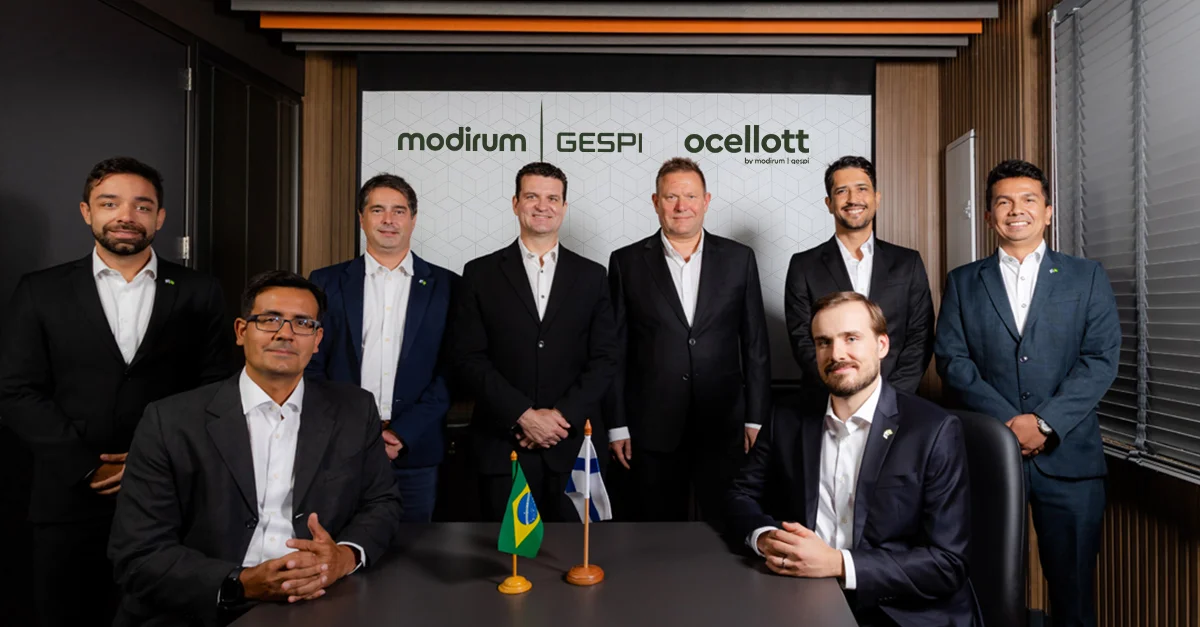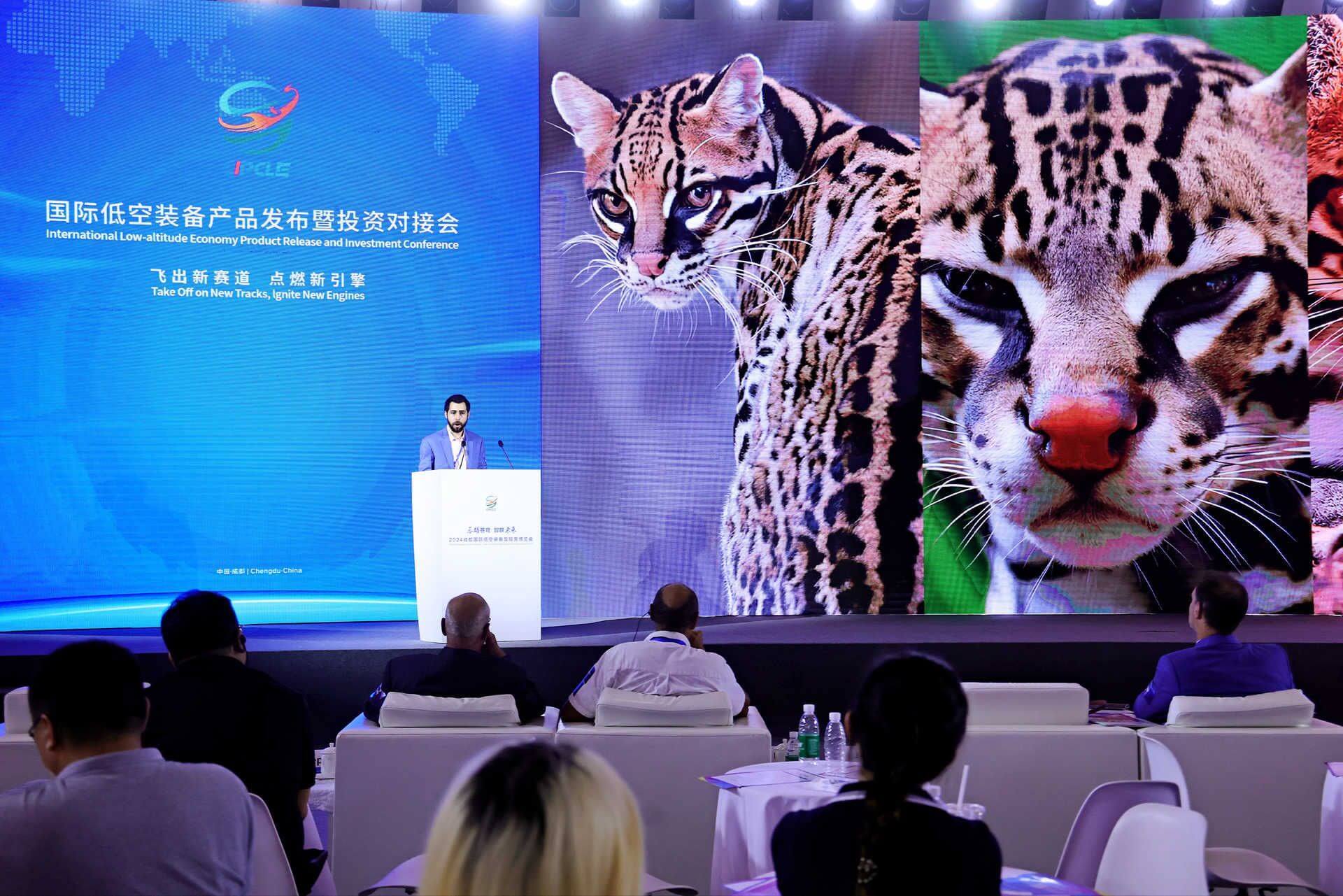Electric vertical takeoff and landing aircraft (eVTOLs) have been developed to meet urban mobility demands. Similar to helicopters, they use an electric motor and take off and land vertically — which saves a lot of space in these processes. Around the world, urban transportation companies are already interacting with eVTOL manufacturers to establish agreements to offer this alternative means of transportation.
One of the main components of these vehicles is the battery, which ensures the operation of the electric motor. Although it is similar to those used in electric cars, those who produce the component for eVTOLs have to pay attention to other aspects. One of the main ones is weight: while for automobiles there is little concern about this characteristic, for a flying vehicle it is essential that the battery is light.
With support from FAPESP’s Innovative Research in Small Businesses program (PIPE), the startup Ocellott is developing a highly complex component for this purpose. “In addition to this specificity in relation to weight, we have other obstacles to overcome, such as the need for fast charging, extended useful life, power capacity, and others,” says Rodrigo Junqueira, control and automation engineer and business director at the company.
The engineer believes that flying vehicles will soon be able to be called via an app — just like cars today. “It’s a new world that’s beginning to take shape,” he says. “And it’s not easy: this market will face several challenges ahead. The battery itself is one of them, because even the best technologies available today don’t perfectly meet the needs.”
Ocellott’s goal is to supply batteries to both eVTOL manufacturers and transportation service operators. “The market for operators should be even larger than that for manufacturers,” Junqueira estimates. “When this component reaches the limit of its operational life and needs to be replaced, for example, the operator will have to buy a new one. This could be one of the business models.”
Two Years
The estimated arrival of eVTOLs on the market is from 2026. “In two years, there should already be certified vehicles of this type,” he points out. “Even so, there are still many aspects to be addressed. This is because it is not enough to create the aircraft, it is necessary to define where and how it will be recharged, where it will land, how the operation will be regulated, and others. These difficulties need to be overcome before the concept becomes popular.”
The researcher imagines that vehicles will probably be available by 2026, but transport operations will still take some time to be established. “The necessary infrastructure is complex and still needs to be prepared.”
Demand for Ocellott’s production is expected to begin as early as 2026, once the aircraft enter service, albeit in small volumes. It is likely that initially the demand will be limited to the manufacturer itself and a few initial operators, but over time it will increase until it stabilizes. “It won’t be a large production like that of an automobile manufacturer, with millions of units per year, but it won’t be as small as that of airplanes, which makes just over a thousand vehicles per year,” he compares.
For Junqueira, when the number of operators grows, the market will grow exponentially. “When it stabilizes, each eVTOL manufacturer should manufacture around a thousand aircraft per month. And there will still be a niche for replacing the product,” he recalls. “And this won’t take long: in five years, or maybe even sooner, there should already be a replacement market. It won’t be soon, but it won’t be that far away.”
The development of humanity over the years shows that, often, the creation of products has led to the creation of needs. This was the case, for example, with the smartphone. Who would have thought, ten years ago, that today practically all tasks could be performed directly on this device, without the need for a computer?
Although the eVTOLS urban transportation market does not yet exist, the existence of the solution could make it emerge. “This is what manufacturers are betting on. Currently, the market most similar to this is helicopters. However, it does not include ordinary people. The big difference is that the objective is to use eVTOL to make this access widespread.”
Internationalization
The company’s name was chosen taking into account the fact that the startup intended to operate abroad. “Ocelot is a synonym for ocelot, which is a word of indigenous origin,” reveals Junqueira. “When we rethought the company’s brand, we looked for elements that would identify it. The ocelot is a feline that is the ideal size, agile and adaptable. It’s like our company: it has the agility to develop complex technologies in a very short time. In addition, the name works well in other languages.”
The nine-year-old startup has had offices abroad for three years. “We have two units in Florida, in the United States. We also participate in international missions. The Brazilian market is small for the type of product we make. Therefore, it makes sense for us to seek markets outside the country.”
The startup was one of those selected to participate in business missions at FAPESP Week China and Italy, which took place in June and at the end of the first half of October.
Ocellott competes with traditional aircraft systems suppliers, but most of them aren’t excited about eVTOL. “They’re not interested in this type of product yet. This allows us to position ourselves in the market. Plus, our agility and expertise set us apart.”
The lack of interest is related to the fact that there is a lot of demand in the traditional aircraft segment, which is an already consolidated market, and in the military sector. “Some countries have huge budgets for this area. For them, this is a very good time to stay in this area. There is therefore room for new products, where there is still risk.”
Ocellott itself operates in the command and control products segment for the military. In other words, the company does not exclusively make batteries for eVTOL. “We have a set of projects and products for military applications.”
The startup’s specialties are the development and manufacturing of electrification solutions and the validation of aeronautical and radio frequency systems. “In the beginning, we offered consulting services to aircraft manufacturers to help them certify their vehicles according to electromagnetic compatibility requirements,” he says. “However, it quickly became clear that it would be important to focus the company on products.”
From there, the team developed systems for traditional aviation, which are now embedded in existing platforms. “We then created other products, such as the battery for eVTOL,” says Junqueira. “In this scenario, FAPESP made a huge difference for us. Without this support, we would not have had the financial strength to advance at the speed we have.”
Article written and published by FAPESP on October 28, 2024. Check out the full article.




